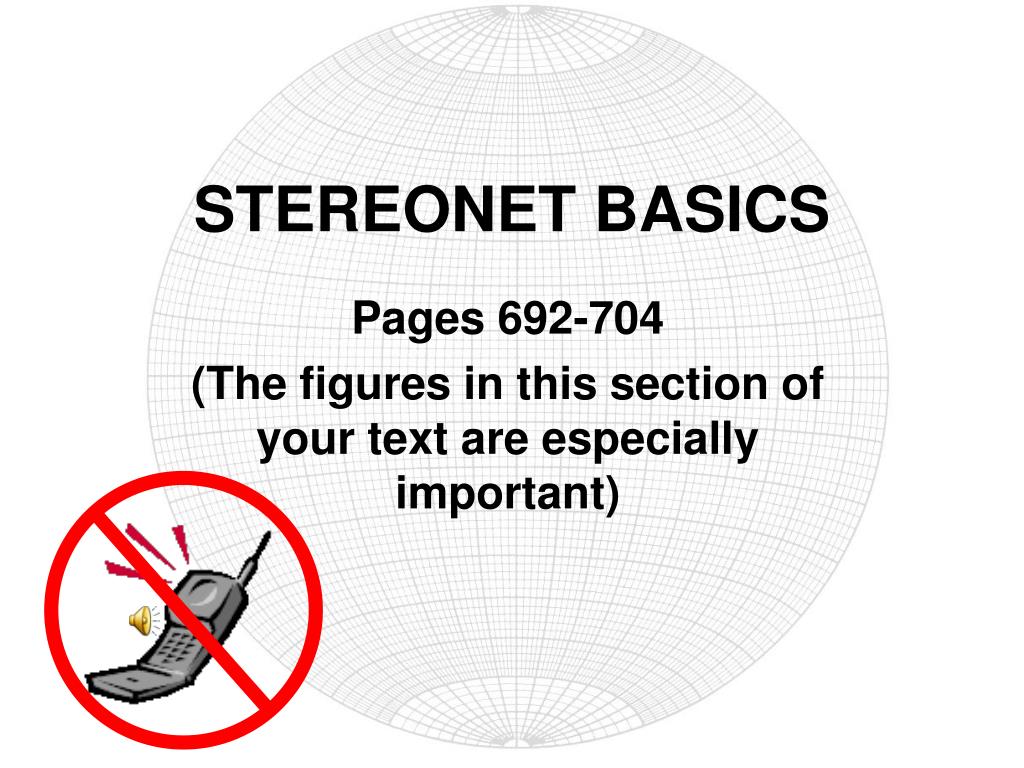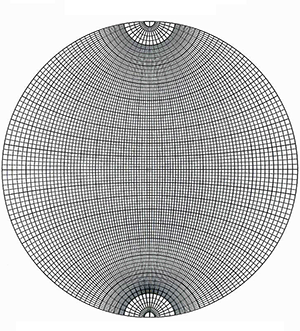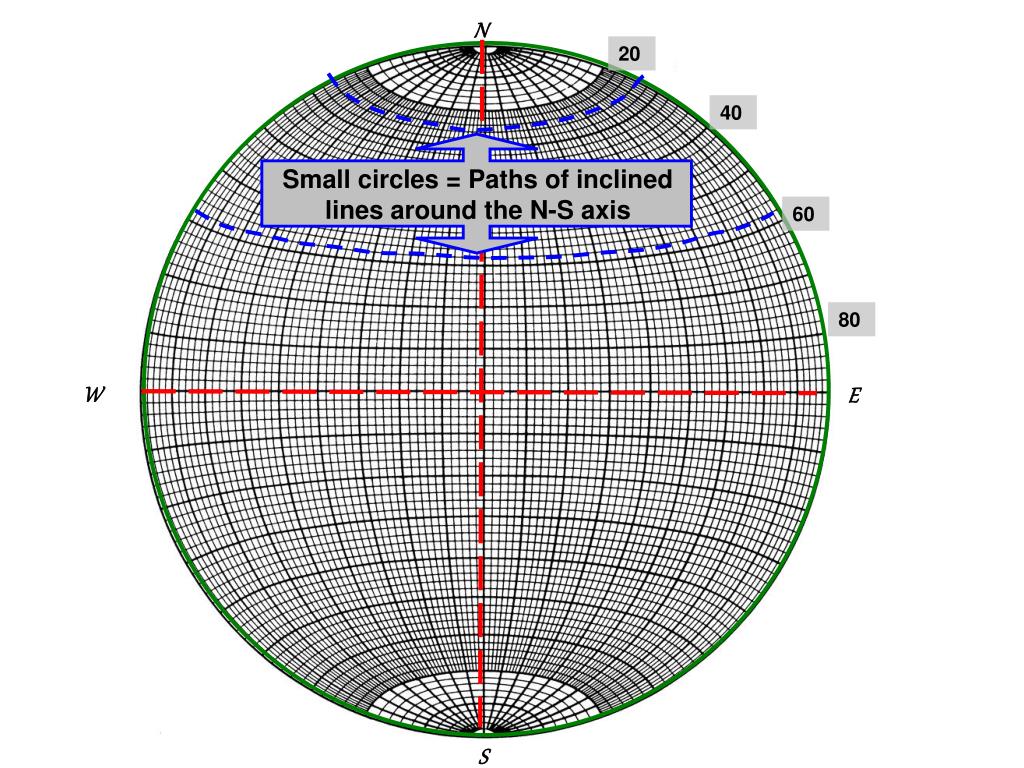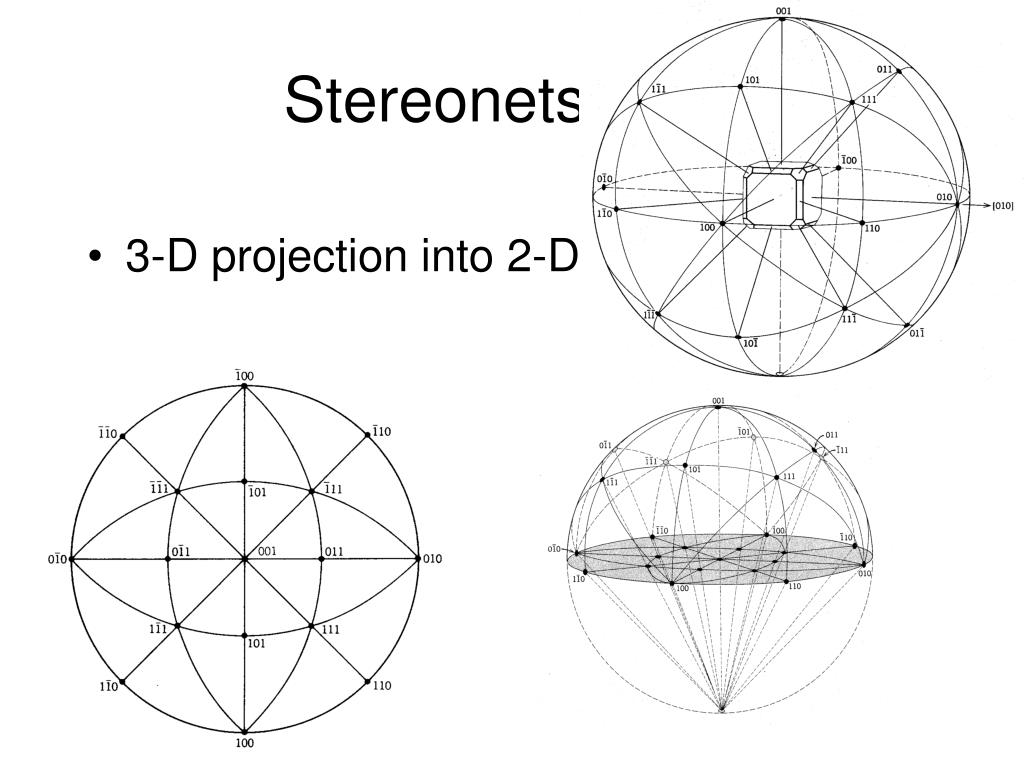A stereonet diagram is a graphical representation used in structural geology to analyze the orientation of geological features such as rock layers, faults, and fractures. It provides a visual representation of three-dimensional data on a two-dimensional plane, allowing geologists to study the distribution and relationships of these features in a geological formation.
Stereonet Diagram Showing the Main Discontinuities
 The above stereonet diagram represents the main discontinuities in a geological formation. This diagram helps geologists analyze the orientation and distribution of structural features such as faults and fractures. By plotting the data on a stereonet, geologists can identify patterns, trends, and relationships that may not be immediately apparent in a three-dimensional view.
The above stereonet diagram represents the main discontinuities in a geological formation. This diagram helps geologists analyze the orientation and distribution of structural features such as faults and fractures. By plotting the data on a stereonet, geologists can identify patterns, trends, and relationships that may not be immediately apparent in a three-dimensional view.
Stereonets: A Tool for Structural Analysis
 Stereonets are widely used by structural geologists as a tool for quantitative analysis of structural data. They provide a way to visualize and interpret complex geological data, allowing geologists to make accurate interpretations and predictions about the subsurface geology.
Stereonets are widely used by structural geologists as a tool for quantitative analysis of structural data. They provide a way to visualize and interpret complex geological data, allowing geologists to make accurate interpretations and predictions about the subsurface geology.
PPT - STEREONET BASICS PowerPoint Presentation
 This PowerPoint slide explains the basics of using stereonets for structural analysis. It covers topics such as plotting data on a stereonet, interpreting structural data, and understanding the various symbols and conventions used in stereonets.
This PowerPoint slide explains the basics of using stereonets for structural analysis. It covers topics such as plotting data on a stereonet, interpreting structural data, and understanding the various symbols and conventions used in stereonets.
Stereonets: A Practical Tool in Geology
 Stereonets are valuable tools for geologists working in the field or in the lab. They allow geologists to visualize and analyze structural data, helping them understand the stress and strain patterns within a geological formation. By analyzing the orientation and distribution of geological features, geologists can gain insights into the geological history of an area and make informed decisions during exploration and engineering projects.
Stereonets are valuable tools for geologists working in the field or in the lab. They allow geologists to visualize and analyze structural data, helping them understand the stress and strain patterns within a geological formation. By analyzing the orientation and distribution of geological features, geologists can gain insights into the geological history of an area and make informed decisions during exploration and engineering projects.
A Printable Stereonet Template
 This image shows a printable stereonet template that can be used by geologists for analysis and interpretation of structural data. The template provides a grid system and concentric circles to plot data accurately. Geologists can use this template to create their own stereonets and analyze structural data in the field or the lab.
This image shows a printable stereonet template that can be used by geologists for analysis and interpretation of structural data. The template provides a grid system and concentric circles to plot data accurately. Geologists can use this template to create their own stereonets and analyze structural data in the field or the lab.
Wulff Net/Stereonet
 The Wulff net, also known as a stereonet, is a specific type of stereographic projection used in structural geology. It is a graphical tool that allows geologists to visualize and analyze crystallographic data. It is particularly useful in the study of minerals and crystallography, allowing geologists to determine the crystal symmetry and orientation of minerals in a geological formation.
The Wulff net, also known as a stereonet, is a specific type of stereographic projection used in structural geology. It is a graphical tool that allows geologists to visualize and analyze crystallographic data. It is particularly useful in the study of minerals and crystallography, allowing geologists to determine the crystal symmetry and orientation of minerals in a geological formation.
Stereonet Template for Analysis
 Another stereonet template that can be used for analysis and interpretation of structural data. This template provides a visual framework to plot and analyze data accurately. It is a valuable tool for geologists studying the orientation and distribution of geological features in a formation.
Another stereonet template that can be used for analysis and interpretation of structural data. This template provides a visual framework to plot and analyze data accurately. It is a valuable tool for geologists studying the orientation and distribution of geological features in a formation.
Analyzing Symmetry with Stereonets
 This PowerPoint slide discusses the relationship between symmetry and stereonets in the field of structural geology. It highlights how stereonets can be used to analyze symmetry and identify patterns and relationships within geological features. Geologists can leverage this knowledge to gain a deeper understanding of the formation’s structural characteristics and interpret the data more accurately.
This PowerPoint slide discusses the relationship between symmetry and stereonets in the field of structural geology. It highlights how stereonets can be used to analyze symmetry and identify patterns and relationships within geological features. Geologists can leverage this knowledge to gain a deeper understanding of the formation’s structural characteristics and interpret the data more accurately.
Lower Hemisphere Equal Angle Stereonet Pole Plot
 The above image represents a lower hemisphere equal-angle stereonet pole plot that depicts the approximate orientations of geological features. This type of stereonet is particularly useful in determining the distribution and clustering of features, allowing geologists to make accurate interpretations about the structural characteristics of a formation.
The above image represents a lower hemisphere equal-angle stereonet pole plot that depicts the approximate orientations of geological features. This type of stereonet is particularly useful in determining the distribution and clustering of features, allowing geologists to make accurate interpretations about the structural characteristics of a formation.
Understanding Symmetry through Stereonets
 This PowerPoint slide further discusses the concept of symmetry in structural geology and its representation through stereonets. It highlights how symmetry analysis using stereonets can provide valuable insights into geological structures and aid in the interpretation of structural data.
This PowerPoint slide further discusses the concept of symmetry in structural geology and its representation through stereonets. It highlights how symmetry analysis using stereonets can provide valuable insights into geological structures and aid in the interpretation of structural data.
In conclusion, stereonets are indispensable tools for structural geologists to analyze the orientation and distribution of geological features. Through the use of stereonets, geologists can make accurate interpretations and predictions about the subsurface geology, enabling informed decision-making in various geological and engineering applications. By plotting data on stereonets, geologists can identify patterns, trends, and relationships that may not be immediately apparent in three-dimensional views, making stereonets an essential aspect of structural analysis in the field of geology.